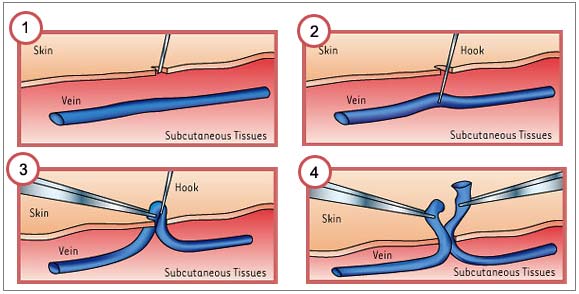Microphlebectomy is a minimally invasive surgical technique used to eliminate unsightly or painful leg veins. This is the recommended treatment for large surface varicose veins. Due to their size, these veins cannot be effectively treated with sclerotherapy. Removal of the veins with microphlebectomy results in quicker healing, less pain, and a better cosmetic result than would occur without this treatment. This technique should not be confused with surgical vein stripping as it differs dramatically from that procedure.
The treatment generally takes one hour to perform with the surgeon carefully removing the vein from the leg, thereby eliminating the unsightly and often painful varicosity. There is no negative effect on the blood flow or circulation in the leg. The blood that has been carried by that vein is simply rerouted to another vein deeper in the leg. Circulation and blood flow continue as before, but better and more efficiently. Recovery is more rapid, and a majority of patients do not need to interrupt regular activity after microphlebectomy.
In many cases, compression sclerotherapy is still the treatment of choice, this technique can be a valuable tool for treatment of some patients. A physician will discuss with you the most appropriate treatment options in your particular case.


